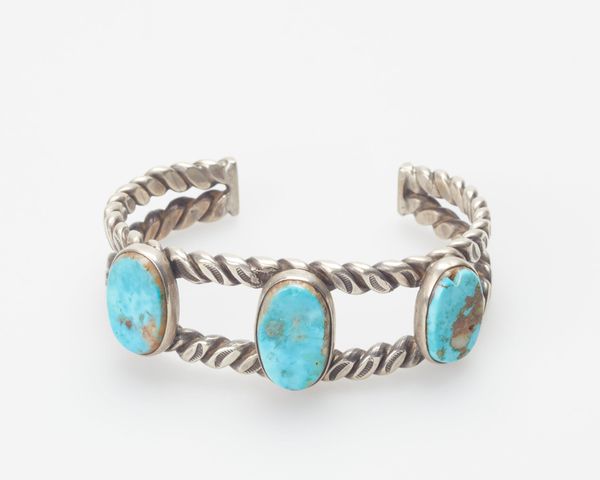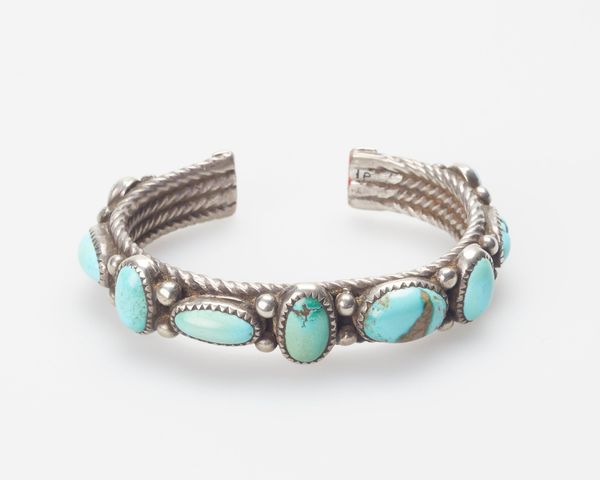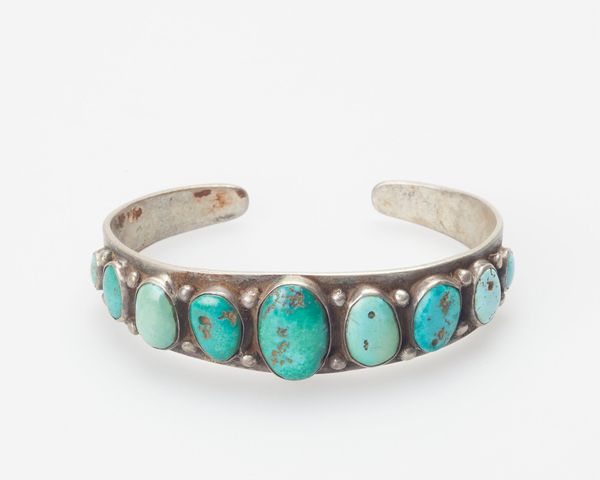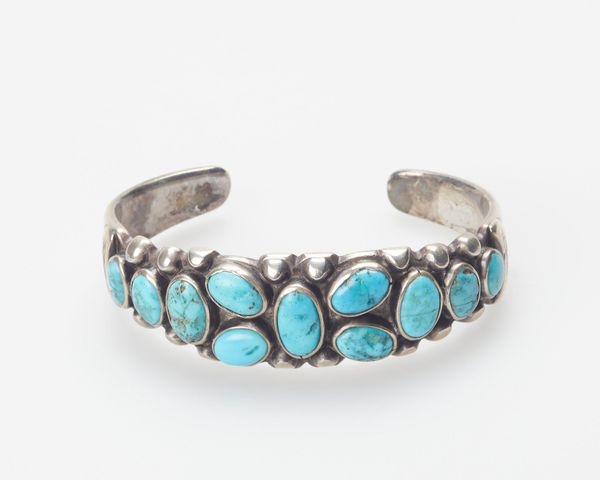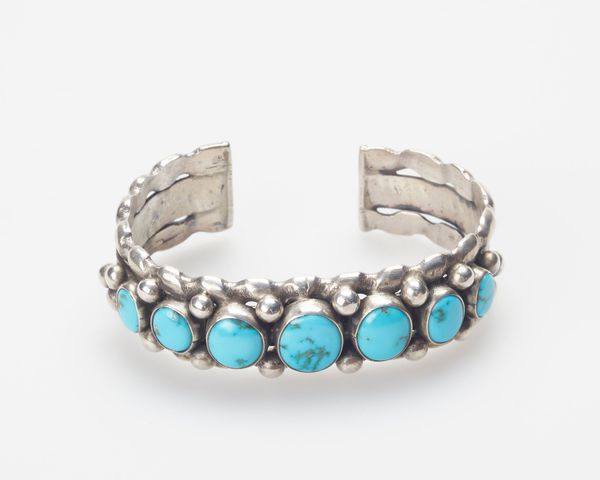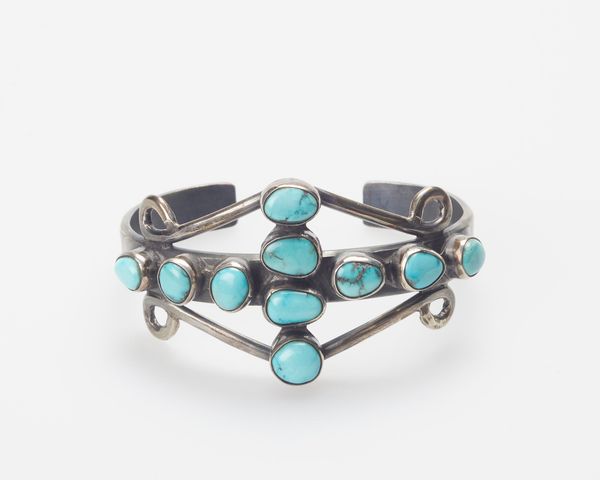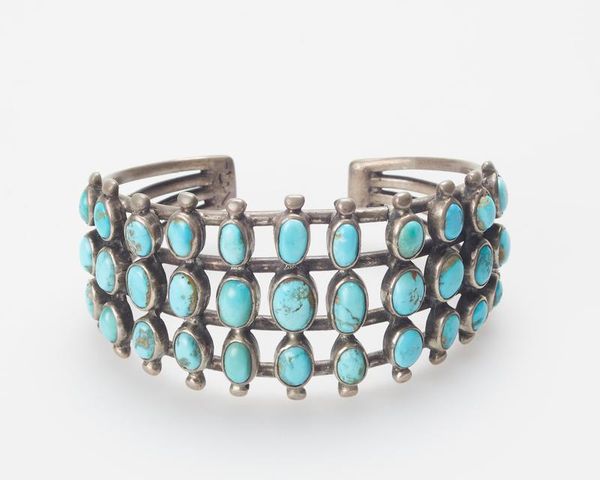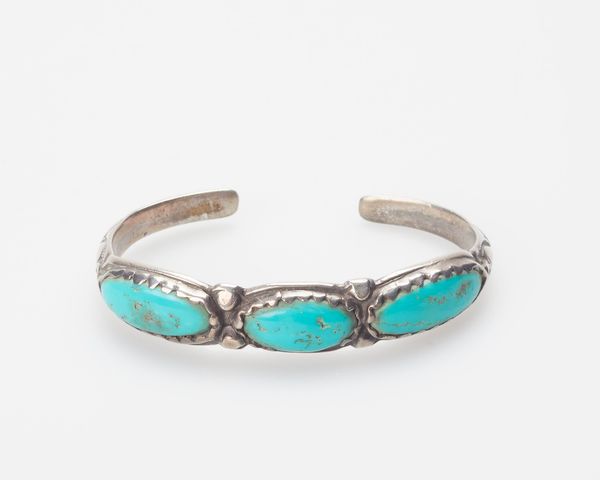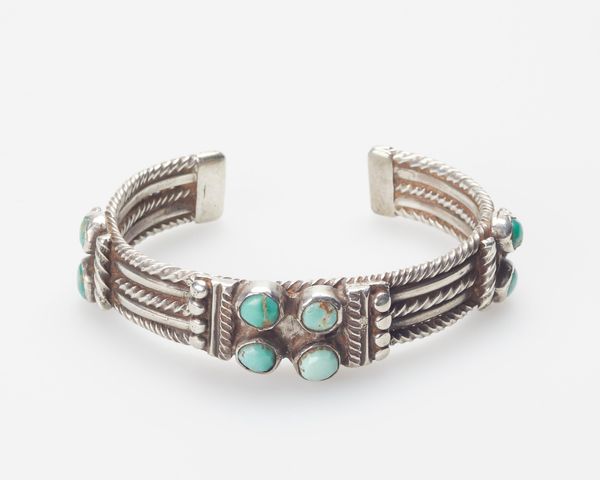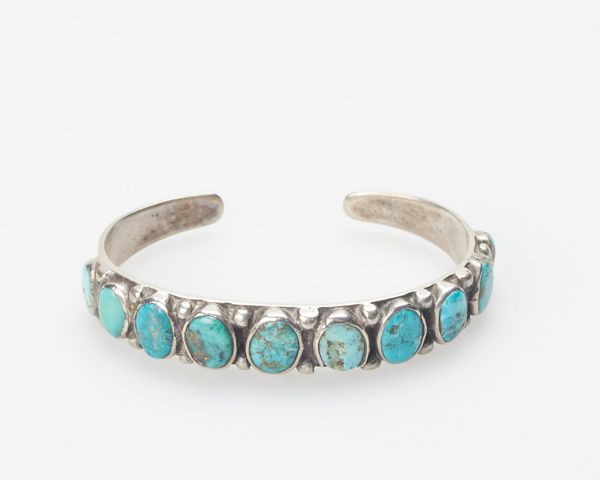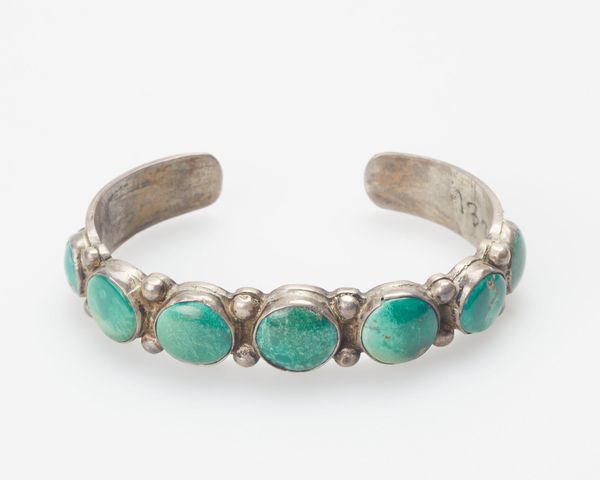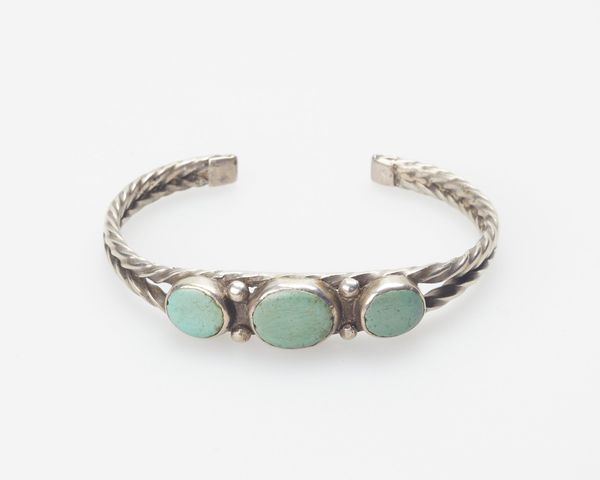
silver, metal
silver
metal
indigenous-americas
Dimensions: 3 1/4 x 3/4 in. (8.26 x 1.91 cm)
Copyright: Public Domain
Editor: Here we have a Diné, or Navajo, bracelet from around 1930, crafted from silver and turquoise. It's so striking, that brilliant blue against the aged silver. What narratives do you see woven into this piece? Curator: It's tempting to appreciate the pure aesthetic, isn’t it? But to truly see this bracelet, we have to consider its complex socio-political context. The Diné, like many Indigenous communities, experienced immense pressure and forced assimilation during that period. What role might objects like this play in cultural resilience and resistance? Editor: Resistance? I hadn’t thought of it that way. It seems more like a beautiful piece of jewelry. Curator: Exactly. The beauty can mask deeper meanings. The silverworking tradition itself was influenced by interactions with colonizers, yet the Diné transformed it, imbuing it with their own symbolism and cosmology. Each turquoise stone, often believed to hold spiritual power, becomes a tiny act of sovereignty. What does it mean for Indigenous communities to reclaim and redefine artistic practices in the face of systemic oppression? Editor: So it’s not just decoration. It's a statement? Curator: It’s layered. It's about trade, adaptation, spirituality, and a refusal to be erased. The creation and wearing of such a bracelet becomes a quiet but powerful act of self-determination. Think about the hands that shaped it, the resources used, the community it represented, and the ongoing fight for Indigenous rights. Editor: That completely changes how I see it. I was focused on the craft, not the cultural weight it carries. Curator: It's a constant negotiation between aesthetics and ethics, isn’t it? Recognizing the cultural and historical context adds depth and enriches our appreciation of Indigenous art. Editor: I will remember to consider these layers when looking at other works; thank you!
Comments
No comments
Be the first to comment and join the conversation on the ultimate creative platform.
